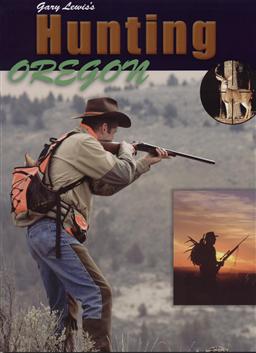
Birds Hunting in Oregon
New to the state? One of the best ways to go hunting in Oregon is to go after birds! Whether it's chukar, pheasants or quail—bird hunting in Oregon is a grand experience. If you're going upland bird hunting soon, be sure to read up on Gary's Oregon bird hunting stories and articles before you go.
-
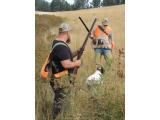
Spokane Valley Roosters and Huns
Hunting pheasants and Hungarian partridge on the Olmstead property in Eastern Washington.
-
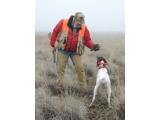
Upland Birds and Waterfowl on the High Plains
The Justesens family property near Grass Valley and Tygh Valley Oregon proves to be a great place for upland bird and waterfowl hunting.
-
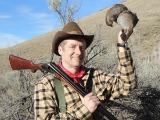
Wild Chukar, Huns and Ranchland Roosters
Bird hunting on Ruggs Ranch in Heppner, Oregon.
-
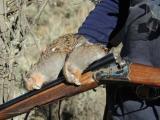
Killa' the Hun
Chukar might be in your plans, but put this partridge in your sights.
-
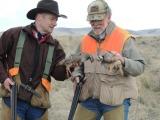
Chukar and Pheasant, West of the Blues
Hunting Hungarian partridge and pheasant in Mayville, OR.
-
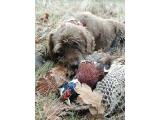
Classic Western Oregon Pheasant
Hunting pheasants along the Calpooia River on the Dern's Wildlife Ranch.
-
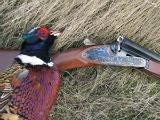
Upland Birds on Historic Oregon Trail Ranch
Bird hunting in the Ochoco Mountains on 12,000-acre Keystone Ranch.
-
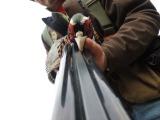
Pheasants, on the farm and in the forest
Hunting ring-necked roosters in historic habitat in the Willamette Valley
-
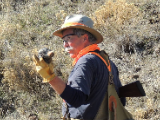
Empty Hulls and Spent Partridges
Time slowed down. The bird was six feet over my head; I swiveled on my heel, focused on the streaking orange collar, the eye, the beak and let him put some distance between us. It was like there was a string between my bead and the bird; I was conscious of the gray shot string coming out of the barrel; the bird folded and tumbled.
-
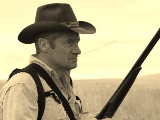
Upland Etiquette for the First-time Bird Hunter
Don’t show up in camouflage. Camo is for big game and turkey hunting. On an upland hunt, you want to be seen. It’s a safety thing. Upland bird pants or chaps are a good idea and a bird vest with orange panels allows your fellow hunter to see you and keep everyone safe while swinging on a bird.
-
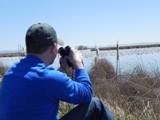
Binos, Birds and Ballet in the Klamath Marsh
“The steady, rapid, springing step, the long hair, the aquiline features and the glowing, angry eyes – the expression of a handsome man conscious of ceasing to be young and an air and manner that told you that whoever you might be he was John Audubon, will never be forgotten by anyone who knew or saw him.” Thus, one anonymous observer recalled the naturalist. Portraits made by his son, John Woodhouse Audubon, show him with his favorite double shotgun, a 10-gauge fowling piece.
-
Southwest Oregon’s Quail of the Mountain
Mountain quail sightings are short affairs punctuated by whirrs of wings and palpitations of the heart, but a hunter is more likely to hear mountain quail before he sees them. An alarm call cle-cle-cle is the sound a hunter is most likely to hear. After the covey is disturbed, mountain quail regroup with a series of whistled how-how-how assembly calls.
-
Hunters can try Snipe for a Change of Pace, a Different Taste
I slogged down through the boot-sucking muck in the creek bottom and up into the mud flats on the other side. I’d seen a cock pheasant fly this way and wanted to get another crack at him. I tromped around through the tall grass on the slope and pushed to the end of some low weeds that didn’t look tall enough to conceal a grasshopper. The big rooster pheasant leapt from the ground about 10 feet in front of me, crowned 10 feet up and flew like a rocket to the cover of some 12 foot reeds a quarter of a mile away. The two shots I took fell harmlessly short.
-
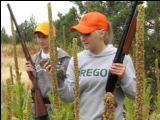
Plan Now for September’s Dove Season Opener
The afternoon heat was lessened by high clouds and a slight breeze that kept the dust from our passing hanging in the air. I walked along in the middle between James and John, well away on either side. We kept hunting not because we expected to see anything, more because we were there and it was better than being at home changing the sprinklers. We’d spooked a deer from her afternoon bed, watched a covey of more than two hundred quail and taken two shots at doves jumped from the grass, but nothing had come from it.
-
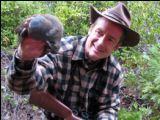
Beginning Birders may find Winter a Good Time to get Started
A rainbow trout drifted by, fins kicking feebly against the wind-swept ripples. The little fish rolled on its side, then righted again, dorsal fin and tail breaking the surface. As I rowed my boat toward the south shore of East Lake, I watched the little guy as he finned in the opposite direction. Sometimes a thin silver-blue line against the deep green of the lake, sometimes a white belly as he gave way to his injuries. I was not the only one watching. A hundred feet above the water, an Osprey flew, loafing on wind currents, the epicenter of the circle he drew directly above the hapless trout. Abruptly, the bird stopped, beating his wings against the air, breaking out of his circle to plunge, wings folded. The bird hurtled toward the water, reaching out just before he splashed down, talons extended. There was an explosion of water droplets, then the bird rising, wings churning, plucking the fish from the surface in a spray of foam. Then he lifted away, beating water from his wings to gain altitude and I watched his flight back to the summer home in the treetops.
-
New Hunters can Benefit from the Structure of an Organized Hunt
We boxed the corner of the standing corn. Sam in the ditch at the point, Mark forty yards to the north and me fifty yards downhill to the east. Dana, Adam and Chad, who already had a rooster in his game bag were busting up through the ten foot stalks. They whistled, they howled like coyotes and shouted. There were pheasants and quail feeding on the corn and as the guys approached, they ran skittering away toward our corner, to circle on the ground or take, squawking, to the air.
-
Steep Terrain and Heavy Cover make Mountain Quail a Challenge to Hunt
The birds were crossing the trail as I rounded the corner. I put the gun to my shoulder and closed the distance as they scurried through the fallen leaves. Advancing, I waited for them to flush, picking a target when they did and swinging with it. The gun boomed and one bird dropped and I ran past it, hoping to get another shot. The birds flushed ahead of me. They were shadows in the trees, most running, some flying, a blur of wings here, a flash of feathers in the sunlight there. No real targets.
-
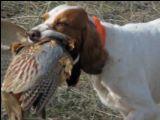
A Tale of Two Sisters in Sisters
Red, Dan Ramming’s three year-old Viszla was focused. She’d been coursing back and forth in front of the hunters staying about 50 yards out front. Now, she cut a tight pattern around a fallen juniper. Low to the ground, she suddenly froze, head cocked, body bent toward a tall sagebrush.
-
Habitat is the Key to California Quail
If there’s anything easy about hunting California quail, it is finding quail habitat. Where the four essential elements of habitat are found - water, food, space, and cover - the chances of locating birds increase substantially. The birds must have water. If there is one reliable water source at hand the chances of finding the birds increase. When water is abundant in an area, birds may be dispersed and harder to find.
-
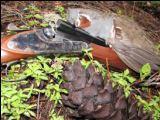
Remember the Birds of September
Opening day of dove season, that harbinger of autumn, is around the corner. Whether you’re shooting birds over maize near Madras, or on the stubble outside of Stayton, it’s hard to deny the thrill of seeing dozens of doves, sweeping toward you and beyond, the sound of the wind in their wings.


